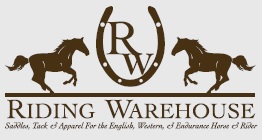Using accupressure to diagnose hind leg lameness
- Take a soft ended pen and find the depression right behind the ear on the neck. This is the BL 10 acupunture point. Hold you horse loosely so he can respond freely. Move the pen back and forth across the point. Does the horse twist his head sideways? This indicates there is hip/hock or stifle pain in the OPPOSITE side rear end.
- To isolate the pain further, find another acupuncture point (GB28) -- 1 inch above the point of the hip. Move the pen front to back around that point. If he flinches, it's hip or hock pain.
- To separate hip from hock pain, find the head of the thighbone and circle it with your pen. If he reacts it's a indication to look at the hip.
- Now find BL36, B37, and BL 38. Take the pen and run it very quickly down this line -- the vertical groove between hamstring muscles, If he reacts in the top part (BL36) it's a hip; if he reacts in the middle part (BL37) it's a stifle. If he reacts in the lower end (BL38) it's a hock.
- To isolate stifle pain, run the pen back and forth under the hip bone (ST26) and see if you find a reaction. Another place to confirm stifle pain is the point (BL21) behind the last rib along the bladder meridian (which is about 8" below the backbone). Check for soreness there.
- To isolate lower back pain, run the pen from the top of groove between hamstrings to the top of his rump looking for a reaction. Run the pen right besdie the spine from his tail to the top of his rump, and if you get a reaction there, its nerve pain similar to sciatica in humans.
These instructions are from the "barrel horse world" listserv...









My vet does not seem to complicate it that much as he uses acupuncture points to isolate lameness. The points are usually in the horse's back end. I really do believe such methods work.
ReplyDeleteAnother option might be some NAET muscle testing. It's another one of those controversial techniques, but I've had some interesting results, so I'd certainly give it a try to see if it showed anything. Some people are really skeptical about it, but a vet did some work on my cat for his allergies and the results were quite good.
Here's a site that talks about using NAET to test for allergies.
http://alternativecancer.us/animal_test.htm
One vet I used years ago, experimented with some NAET testing to check a saddle fit and some muscle soreness on my horse before he did some acupuncture.
Even if you don't find out anything, It's certainly interesting and kind of fun to try some of these less traditional methods.
Acupressure is amazing. I do trigger point therapy--kind of acupressure meets massage--on myself for my tendinitis and arthritis problems, and it works like nothing else can. I have a copy of "Equine Acupressure: A Working Manual" by Nancy Zidonis, and I think it's really good, especially considering it's practically the only book you can find on the subject. I got it so I could learn the equine points and make my own trigger point therapy for horses. Anyway, I would tend to sway that this would work really well as a diagnostic. Though, I'd recommend people to learn at least the basics about acupressure before trying it. A tiny bit off, and you could do more damage than good.
ReplyDeletePretty neat! Fenway Bartholomule put up a link at his facebook page . . . great to contemplate the power of alternative therapies and diagnostics.
ReplyDeletewww.facebook.com/fenwaybartholomule
www.braysofourlives.com
Nice post. Thanks for sharing such a useful post.
ReplyDeleteAcupuncture Specialists in Chennai